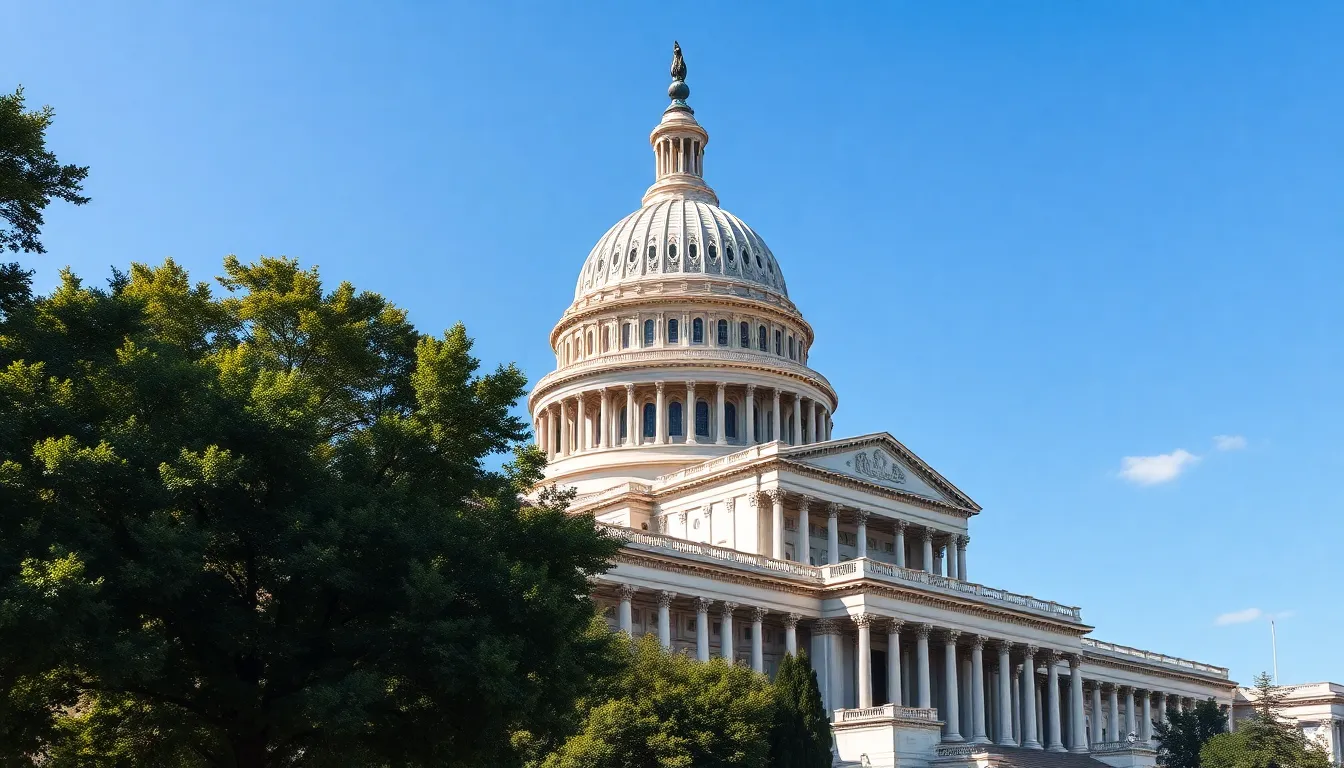Censure in Congress is a powerful tool used to hold members accountable for misconduct or unethical behavior. This formal reprimand serves as a public condemnation, signaling disapproval without the severe consequences of expulsion. It’s a significant action that reflects the gravity of a member’s actions while allowing them to retain their position.
Understanding censure is crucial for grasping how Congress maintains its integrity and upholds ethical standards. The process involves a vote and can stem from various issues, including corruption, dishonesty, or inappropriate conduct. By exploring the intricacies of censure, readers can better appreciate its role in the legislative process and its impact on congressional members.
Table of Contents
ToggleOverview of Censure in Congress
Censure represents a formal reprimand in Congress aimed at holding members accountable for misconduct or unethical behavior. Censure serves as a public condemnation, emphasizing the seriousness of a member’s actions while preserving their position, unlike expulsion, which removes them from office.
Congressional censure typically involves a resolution that outlines the specific conduct that warrants the reprimand. The censure process requires a majority vote in either the House or the Senate, reflecting the commitment of Congress to uphold ethical standards. Members face censure for various issues, including but not limited to corruption, dishonesty, harassment, and violating rules of conduct.
Once enacted, censure can affect a member’s reputation and influence, serving as a tool to reinforce congressional integrity. Understanding censure is crucial for recognizing its role in maintaining ethical behavior within the legislative process and promoting accountability among elected officials.
Historical Context

Censure has played a significant role in Congressional history, serving as a tool for accountability and integrity. Examining early instances and notable cases highlights its importance.
Early Examples of Censure
Early examples of censure in Congress demonstrate its application as a disciplinary measure.
- 1798: The House of Representatives censured Matthew Lyon for using “seditious” language against President John Adams. This marked one of the first uses of censure, establishing a precedent for subsequent actions.
- 1856: Congress censured Representative Preston Brooks for assaulting Senator Charles Sumner on the Senate floor. This event highlighted censure’s utility in addressing not just conduct but also violence among members.
Notable Cases in History
Several notable cases illustrate the impact of censure on congressional members.
- 1976: The House censured Representative Charles Rangel for financial misconduct, including failing to report income and improper use of a rent-stabilized apartment. Rangel’s censure emphasized the seriousness of ethical violations in Congress.
- 2010: The House censured Representative Alan Mollohan for using federal funds improperly. The censure served as a reminder of the need for transparency and accountability among elected officials.
- 2021: The House censured Marjorie Taylor Greene for inflammatory remarks and actions that incited violence. Her censure reinforced the notion that Congress must uphold decorum and ethical standards.
These instances reflect the ongoing use of censure as a vital mechanism in maintaining legislative decorum and accountability.
The Censure Process
The censure process consists of several formal steps aimed at addressing misconduct among Congressional members. It maintains accountability while allowing individuals to retain their positions.
Steps Involved in Censure
- Resolution Introduction: A member of Congress introduces a resolution that specifies the actions leading to the proposed censure.
- Committee Review: The resolution goes to the relevant committee for review and discussion, where it evaluates the grounds for censure.
- Committee Vote: The committee votes on whether to advance the resolution to the full chamber.
- Full Chamber Debate: The full chamber (House or Senate) debates the resolution, allowing members to express their views on the conduct in question.
- Final Vote: A majority vote in the chamber is required for the censure resolution to pass, confirming the reprimand.
Differences Between Censure and Other Disciplinary Actions
- Censure vs. Expulsion: Censure serves as a formal reprimand, allowing members to retain their positions, while expulsion removes them from Congress entirely.
- Censure vs. Reprimand: Censure is a public condemnation, whereas reprimands are less formal and often delivered privately without a formal vote.
- Censure vs. Admonishment: Censure involves a strong, public statement against misconduct, while admonishment typically signals disapproval without the same level of public scrutiny or consequence.
Impacts of Censure
Censure in Congress significantly influences both the individual member and the broader legislative dynamics. The repercussions of censure extend beyond the immediate context, shaping future interactions and accountability within the legislative body.
Effects on the Individual Member
Censure affects an individual member’s reputation and credibility. Public condemnation can lead to diminished trust among constituents, impacting re-election chances. Members may face criticism from their peers and political opponents, creating a hostile environment that diminishes their effectiveness. In some cases, censured members may experience psychological stress stemming from public scrutiny. Additionally, censure may hinder their ability to secure leadership positions or influential committee assignments, ultimately altering their legislative career trajectory.
Effects on Legislative Dynamics
Censure can reshape legislative dynamics by establishing a precedent for accountability. When Congress publicly reprimands members, it reinforces the importance of ethical conduct, promoting decorum among their peers. This public scrutiny can foster a culture of integrity, encouraging members to adhere strictly to established rules and norms. Moreover, censure may alter voting patterns and alliances, as some members might distance themselves from those who face significant public backlash. The fear of censure can also deter unethical behavior, encouraging a more responsible legislative environment that upholds the institution’s standards.
Contemporary Issues
Censure in Congress remains a relevant topic, with recent cases and political implications reshaping the dialogue around accountability and ethics in governance.
Recent Censure Cases
Recent censure cases illustrate the ongoing application of this disciplinary mechanism within Congress. In 2021, Representative Marjorie Taylor Greene faced censure for incendiary remarks that led to significant public backlash, demonstrating the impact of rhetoric on congressional decorum. In 2022, Representative Paul Gosar received censure after posting an animated video depicting violence toward a fellow member, emphasizing how the misuse of social media can trigger formal reprimands. Furthermore, the censure of Representative Adam Schiff for his role in the impeachment proceedings against former President Trump showcases the contentious nature of political discourse, with censure often reflecting deep divisions in Congress. These instances reveal the real-time consequences of members’ actions and the continuing relevance of censure as a tool for maintaining standards.
Political Implications of Censure
Censure carries substantial political implications, influencing both individual members and broader legislative dynamics. Censured members often experience diminished public trust, affecting their support among constituents. Potential challengers may exploit censure to paint incumbents as unethical, which can jeopardize re-election prospects. Additionally, censure can polarize party lines, with members distancing themselves from censured colleagues to mitigate political fallout. This distancing alters coalition-building efforts and impacts legislative negotiations, as members may hesitate to associate with those subject to public condemnation. Censure serves as a reminder of accountability’s role in shaping political interactions, highlighting the importance of ethical behavior within the legislative process.
Censure in Congress serves as a vital mechanism for maintaining ethical standards and accountability among elected officials. This formal reprimand not only addresses misconduct but also keeps members in their positions, allowing them to learn from their actions. The historical significance of censure underscores its role in promoting integrity within legislative bodies.
As contemporary cases continue to emerge, the implications of censure extend beyond individual reputations to influence broader political dynamics. It fosters a culture of responsibility and decorum, essential for the health of democratic governance. Ultimately, censure remains a powerful tool for upholding the principles of accountability and ethical conduct in Congress.


